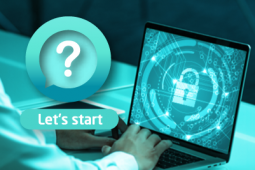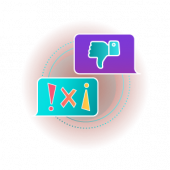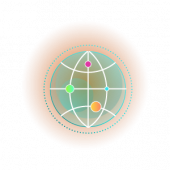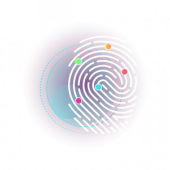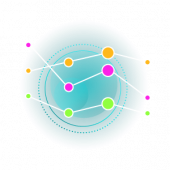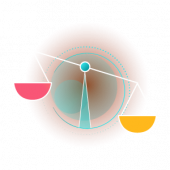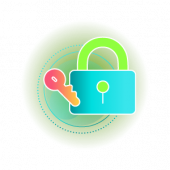How can I support my child’s digital competence through daily activities?
Distance Teaching and Learning: Concept, Need, Opportunities and Challenges

In light of the accelerating pace of changes and developments that are occurring in this time, which are resulting from several technical, environmental, health or other factors, and considering teaching and learning as one of the most important human needs after food, security, and health, it was necessary to stand on the latest developments related to it, especially those related with procedures and paths to achieve it, and meet the needs of learners in light of emergency and non-emergency changes away from the traditional form of implementation, so we can achieve it remotely with quality and effectiveness.
This time and similar emergency times, the reality of education is introducing radical transformations that affect the education sector worldwide; including its curriculums, mechanisms, tools, plans, and programs; to adapt to the new circumstances, the challenges resulting from the closure of schools, house quarantine, and the commitment to social distance, which led to the blocking of regular educational services from the learner, and the transformation of the education to the distance e-teaching and learning system through the possession of its platforms of audio and visual resources, illustrations and Illustrated tutorials, with homework, assignments, grades, and contributors; to keep the wheel of education continuing in its rotation.
The concept of teaching and learning
Is there a difference between teaching and learning? We often find these two terms inseparable; because they are closely related and have common factors; the most important are science, knowledge, teacher, and the learner, and each of them has its own significance.
Teaching: It is related to education service providers and the most important of them are teachers.
Learning: it is related to the recipients of the education service and they are students of any age and gender.
We can define teaching as the participation of learners to enable them to understand and apply knowledge, concepts, and skills, and this means that it does not require from the teacher to know only the subject, but also to know how the learners are learning, and turn them into contributors to the active building of knowledge; by creating educational, social and ethical conditions which learners agree to take charge of their learning individually and collectively.
On the other side, we can define learning as an activity or process of acquiring knowledge or skill through studying, practicing, teaching, or testing something (Merriam-Webster dictionary).
Learning simply means what students do, not what we as teachers do. In this context, many people assume that teaching is more important than learning, but the truth is exactly the opposite because the primary and ultimate goal of education is learning, just as learners can learn often without teachers, but teachers cannot teach without learners; Therefore, and in light of current or future emergency conditions, education is required to increase its connection with the life skills that link the learner with the reality of his life, through developing its curricula and activities in a way that ensures the learner's ability to adapt and to deal with new developments, and to face the difficult exceptions that he may face during his learning life.
What is distance learning? How is it different from learning online?
First of all, I would like to point out that most - if not all of the sources - use the term (distance learning) in all cases of distance learning, and if we want to be careful in dealing with the terminology and its implications, we must understand that the presence of two parties (teacher-learner) whatever the trait of this teacher, that means there are two processes: teaching and learning, and when we talk about self-learning through reading, observation, and self-training, we only talk about the learning process, accordingly, we can refer to another term besides the term of (distance learning), which is (distance teaching and learning).
The truth is that teaching and learning are two inseparable processes; whereas the process of learning does not happen - often - alone, without teaching, even if it is in its apparent form a self-learning; for example, a student’s viewing of a pre-recorded video lesson, found on YouTube, does not mean in its depth meaning that only the student alone did this personally, but there is a teacher indirectly shared it; this leads me to suggest the use of the term (distance teaching and learning) in all cases.
Merriam Webster defines distance learning as: "a method of study where teachers and students do not meet in classrooms, but they use the Internet, email, and regular mail, etc., to obtain classes." We can simplify, clarify and broaden this definition; to reach a precise and comprehensive definition of the concept of distance learning; where we can say that it is a low-cost teaching and learning approach compared to the traditional approach, which depends in its implementation on the use of electronic and non-electronic educational tools and channels within an individual or group virtual classes; It is not personal or face-to-face contact with the teacher or peers, and is often unrelated to a place or time.
Based on our saying (using electronic and non-electronic educational tools and channels), both online learning and distance learning is part of the other, and online learning can be defined as the use of teachers or students to educational tools that can be accessed via the Internet regardless of the place or time, these tools are often used to create learning environments integrated into the classroom, as this helps in maintaining student participation and interaction, and we can clarify the difference between online learning and distance learning through several elements:
- The difference in the time and location of implementation, which is the main difference between them, where students and teachers can be together in the class at the same time, and interact face to face during implementation using online learning, either in distance learning, their locations are different, and even the time of implementation can be different.
- The difference in interaction, because of the difference in location, the interaction between you and your students is also different; in online learning, it is regular and face to face if done in the classroom; It is an educational strategy combined with other traditional educational strategies. While there is no personal interaction between the teacher, students, and peers in distance learning, and various digital forms of communication are used.
- The difference in the intention of the teaching strategy, online learning is designed to be used with a variety of other traditional teaching strategies within the classroom as a supplement to it; to providing a variety of learning opportunities for students. As for distance learning, it is a method of present education through electronic educational tools and channels (for example, the Internet) and non-electronic (for example, books and brochures by regular mail), and not as a diversification in teaching strategies.
Therefore which is better? You will find that online and distance learning have a place in education; One of them will be better than the other, depending on the needs of the learner and teacher.
It should be noted here that in distance teaching and learning, roles are distributed equally, in contrast to the real classes which the teacher has preceded to present the content. In distance teaching and learning, it is better for the teacher to provide the student with the keys to learning, and draws his attention to what he is intended to learn, and leaves diving in the depths of the subject to him; to let the student be the one who thought, researched, read, analyzed and extracted, so that this followed strategies, and the acquired skills, become able to transfer the student from the stage of receiving and consuming the ready product to the stage of active participation and production of content, in a condition that the teacher must provide guidance, feedback, evaluation, and enhancing of the student's learning during and after it.
The need for distance teaching and learning
Quite simply, teaching and learning are indispensable as a basic human need, and it is a right for everyone, whatever the circumstances, such as difficulty to reach school as a basic learning environment; as a result of emergency conditions related to public health (Covid19 as an example), wars or natural disasters, etc... In addition to changing lifestyle, development, and expansion of learners' needs in light of the development and expansion of technology.
Educational interventions during crises can support the prevention and recovery of public health by mitigating the effects of these crises on students and the teaching and learning process, and this support also includes transforming schools into temporary service centers for shelter or quarantine when health facilities are overcrowded, or when the need arises to it, all of this must be taken into consideration in the strategic planning process.
The advantages and benefits of this type of education lead us to adopt it as an appropriate alternative to traditional education, the most important of which can be summarized as follows:
- Time and Location flexibility.
- Saving the money, effort, and time required to reach school and pay its expenses.
- Working and learning in parallel; so we can develop ourselves, and also get promotions associated with certificates and training courses.
- Meeting the needs of learners and obtain a large area of freedom in the form and methods of learning that suit the learner.
- Continuity, no emergency, or restrictive circumstances can prevent you from this type of teaching and learning except within very narrow limits.
- Liability and self-commitment, as the previous benefits, do not give you space to blame the responsibility for your dereliction or failure to others.
- Students acquire distance learning skills and perfection digital skills whenever needed.
Opportunities and challenges of distance teaching and learning
The features and benefits of distance teaching and learning; Which we mentioned earlier, constitute opportunities for learning that meet the needs of learners in all types; through viable and effective strategies that contribute to increasing student participation, and presenting content in multiple ways so that it can be reviewed repeatedly at any time. The biggest opportunity that distance teaching and learning provides us is that it is a suitable and effective alternative to traditional teaching and learning in the event of unexpected school closings as a result of emergency conditions or crises.
Through the experiences of different schools at the global level, the experience of distance teaching and learning works better with middle and high school students; whereas, they have access ability to technical tools and can handle it better than younger students, and they work responsibly by themselves without the need - often - for parents intervention, which means that learning primary school students is a challenge; especially when parents are busy, and the difficulty becomes more whenever we go to the lower grade at this stage, which requires to create and develop more flexible plans and appropriate strategies, with the necessity to provide appropriate ongoing support from parents and teachers for this level of students.
There are also other challenges we face in this field, including the following:
- Distance teaching and learning cannot be used if students and teachers do not have access to devices or the Internet at school and / or home, or do not have the skills to deal with devices or Internet technologies.
- Difficulty in tracking whether students are already working or not, or that someone is working on their behalf.
- This pattern is not appropriate for all types of learners to some extent, especially those with special needs who need the presence of the teacher constantly to provide educational support on a regular basis.
- The absence of personal social interaction and oral communication between the teacher and students on the one hand, and students and their peers on the other hand.
- Difficulty in providing immediate feedback to the student to improve his performance.
- Difficulty in teaching some subjects that require practical training.
- Students' lack of motivation to learn.
- This can cause a long screen time for the student.
- Technical problems related to the absence or weakness of the Internet, or the inefficiency and limitations of the devices, etc.
- Maintain enthusiasm and participation in distance teaching and learning process for students and their families.
Finally, we all need awareness of the importance of distance teaching and learning, also the need for it; especially in light of emergency conditions, and the continuing professional development of the educational staff, by they getting and students enough training educational tools, technologies, and applications related to it, and provide the infrastructure, devices, and tools necessary to carry out the teaching and learning processes easily, and to achieve its goals and meet the needs of the learners and teachers.
@2x.png)











